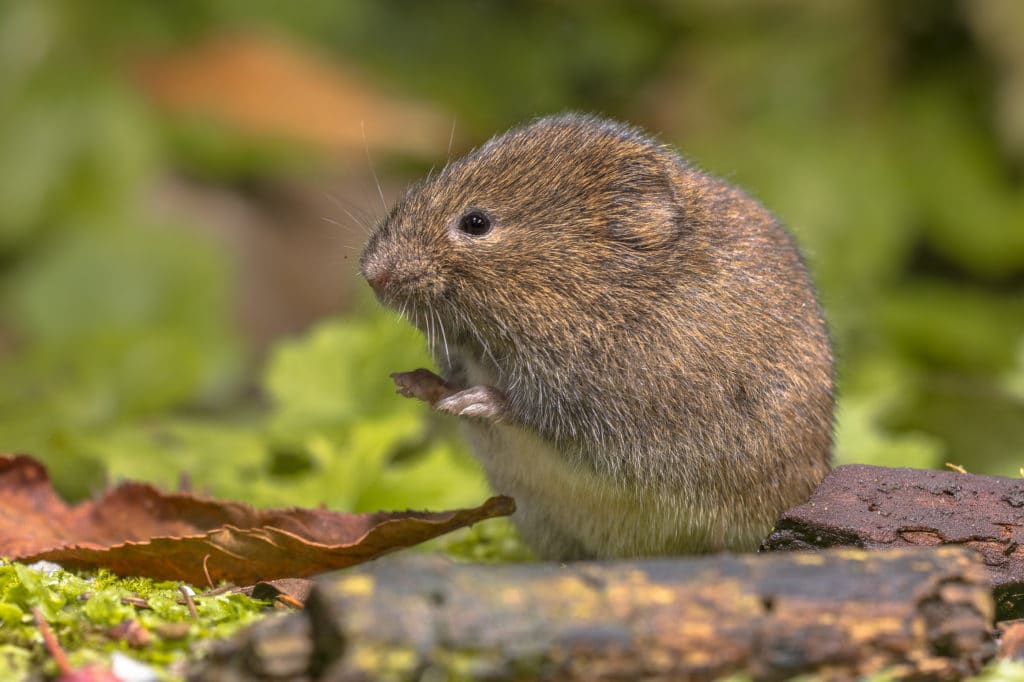Vole Pest Control Demystified: A Total Overview of Problem Detection and Reliable Therapy Methods
From subtle signs of invasion to the application of targeted control measures, browsing the realm of vole pest control demands a blend of knowledge and calculated action. In this detailed overview, we will certainly check out the subtleties of vole infestation discovery and dive into the world of effective treatment approaches that can protect your areas from these underground annoyances.
Understanding Vole Actions Patterns
Comprehending the complex behavior patterns of voles is necessary for effectively carrying out pest control measures in residential and farming setups. Voles, small rodents that appear like mice yet with stouter bodies, are infamous for their fast recreation prices and ravenous hungers for greenery. By delving into their habits patterns, bug control professionals can acquire important understandings right into vole vulnerabilities, routines, and preferences.
Voles are primarily herbivores, feeding on a vast array of plants, tubers, origins, and light bulbs. They are also prolific tunnelers, developing fancy underground burrow systems for nesting and foraging. By recognizing these practices, pest control professionals can purposefully put traps and bait stations along vole runways and entry points, enhancing the likelihood of successful obliteration.
Moreover, expertise of vole behavior patterns can help in developing precautionary measures to hinder future invasions. By dealing with factors that attract voles, such as dense greenery cover and easily available food sources, homeowner can make their properties much less inviting to these harmful parasites - vole control utah. To conclude, a thorough understanding of vole habits is vital in designing efficient and lasting insect control approaches
Identifying Signs of Vole Invasion
Efficient vole insect control begins with without delay identifying the dead giveaways of vole invasion on properties. Among the most typical indications of vole presence is the visibility of surface area runways. These paths are slim paths via turf or greenery that voles develop as they take a trip between their burrows and food resources. Furthermore, vole droppings are one more clear indication of problem. Vole droppings are small, cylindrical pellets that are usually found along their paths or near their burrows.
Along with paths and droppings, nibble marks on tree bark and greenery are additionally signs of vole task. Voles have a behavior of gnawing on the bases of shrubs and trees, which can create damage and possibly eliminate the plants. The existence of burrow openings in the ground indicates an energetic vole population. Vole burrow entryways are commonly small and found in grassy or mulched locations.
Being vigilant for these indications can aid homeowner spot vole infestations early and take appropriate insect control measures to stop further damage.
Implementing Targeted Control Steps
What certain techniques can be utilized to efficiently execute targeted control procedures for vole insect monitoring on properties? Implementing targeted control steps for vole parasite management calls for a multi-faceted method that incorporates both avoidance and removal techniques. Among the key strategies is environment adjustment, which entails getting rid of vole-friendly environments such as high yard, weeds, and particles near structures. Installing obstacles like hardware cloth or crushed rock around garden beds and tree trunks can also help deter voles.
Trapping is one more effective technique for controlling vole populations. Live traps can be tactically positioned along vole runways or burrow entrances, baited with peanut butter or apple slices. Once caught, voles must be humanely removed to a various place to prevent reinfestation.
Rodenticides can be utilized as a last option for extreme invasions, yet caution needs to be worked out to avoid injury to non-target pets. When utilizing rodenticides for vole control - vole control., it is important to adhere to all safety guidelines and laws.
Environmentally Friendly and natural Remedies
The adoption of ecologically mindful techniques can play a pivotal duty in managing vole populaces without triggering damage to the ecological community. Eco-friendly and all-natural solutions use a Continue lasting technique to vole bug control, reducing using unsafe chemicals and promoting biodiversity in the influenced areas.
One efficient natural approach is making use of killer urine or killer decoys. Predators like serpents, foxes, and owls are the vole's natural opponents. By purposefully placing killer pee or decoys around the infested areas, voles may be discouraged from clearing up in those areas.
Furthermore, growing vole-resistant plants can aid in lowering vole damages. Plants such as daffodils, crown imperials, and Siberian squill are recognized to be unattractive to voles and can function as natural repellents.
Additionally, producing physical obstacles like cable look at this website mesh or gravel around susceptible plants can protect against voles from accessing them. These barriers can assist secure yards and landscapes without positioning any type of threat to the environment or various other non-target types. By incorporating these all-natural and environment-friendly solutions, vole invasions can be managed properly while maintaining ecological equilibrium.
Long-Term Avoidance Methods
To sustainably address vole infestations gradually, applying aggressive measures is vital for long-lasting prevention approaches. One effective approach for long-term prevention is environment modification. vole control. By minimizing thick greenery, mulch, and mess around buildings, you can make your building less enticing to voles. Additionally, installing barriers like fences or below ground cord mesh can help deter voles from attacking your yard or grass.
Regular surveillance of vole task is important for early detection of any signs of invasion. Establishing vole catches can help in regulating their populace prior to it becomes a full-blown infestation. It is additionally essential to secure off any access points to structures or structures to stop voles from accessing.

Verdict
To conclude, recognizing vole behavior patterns, recognizing signs of infestation, executing targeted control procedures, making use of environment-friendly and all-natural remedies, check over here and implementing long-term avoidance strategies are important action in properly taking care of vole invasions. By being proactive and taking the needed steps to address vole concerns quickly, people can effectively manage and prevent vole problems in their residential properties.
